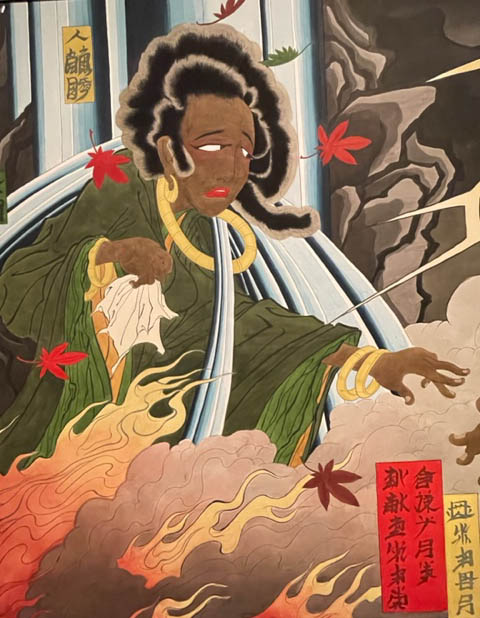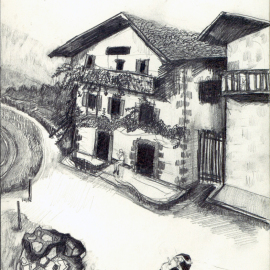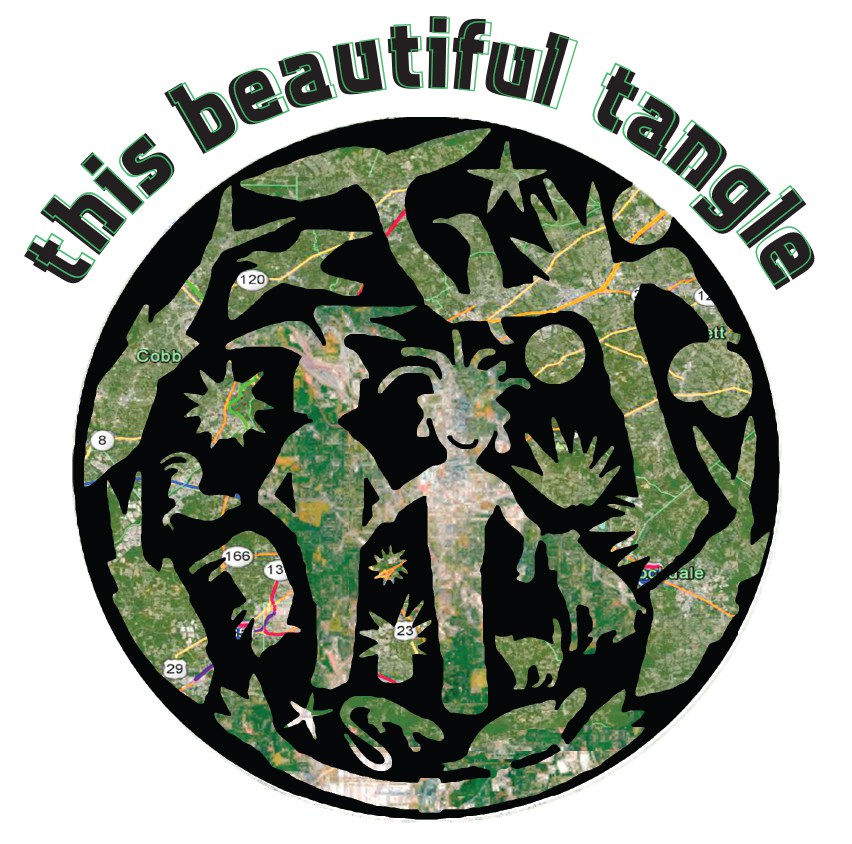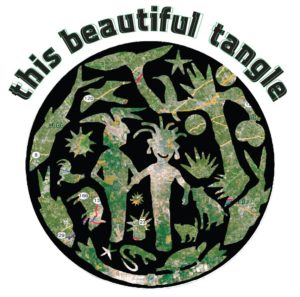Some thoughts about
Braden Sadler & the Samurai Exhibition
August 13, 2023
We went to see the Samurai exhibit at the High Museum in Atlanta yesterday. If I absorbed the wall text correctly, local artist Braden Sadler was responsible for the creative vision of some of the exhibition design, including the entry room. There the walls were plastered with documentation of the Samurai in popular culture. You could watch video sequences that included expected excerpts from Kurosawa’s Seven Samurai, in addition to quick peeks at Forest Whitiker working his sword as the title character from Jim Jarmusch’s film Ghost Dog. Whitiker played an assassin who lived by the Samurai Code and communicated via pigeon post. (Fantastic soundtrack btw, including Wu-Tang Clan and Whitiker reading from the Samurai Code.) A still image of larger-than-life Uma Thurman as The Bride from Tarantino’s Kill Bill stared out at us with murderous eyes. A portrait of Darth Vader was juxtaposed with that of a Samurai in full regalia in such a way that the similarities in their costuming became immediately evident. This compelling contemporary perspective was a good reminder of the global influence of Samurai culture and the continued significance of the artifacts that we were about to experience.
Somewhat off-tangent, I know, but this display reminded me of the last room of the Pirates Museum in St. Augustine, Florida which we had visited the week prior. I know this is not very high-brow, but still memorable and worth a comparison. After viewing heavy implements of torture, many maps, and treasure paraphernalia, the last room brought into focus the continued love of the idea of the Pirate. Every inch of wall in this small room of departure was covered with images of pirates in movies and visual art. Included was a promotional poster and sound recording from Hook with Robin Williams, who I always love to see in any role, and small reproductions by the “Pirate Painter” Howard Pyle. I did not know that he had been called that by some. This incorporation of current culture into a historical exhibition can make it feel more relevant for some of us.
Back to Samurais–about halfway through the procession of the exhibit, a narrow gallery appeared dedicated to a series of paintings by Sadler. These large works of ink and watercolor on paper (53″ x 108″), were commissioned for this exhibition. They illustrate a chapter from the story of Yasuke, the black Samurai. You can see them on Sadler’s website.
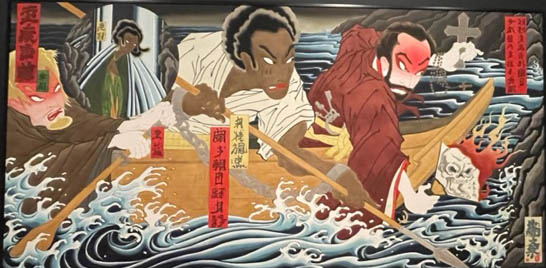
Sadler’s cultivated style, influenced by the stylized shapes and lyrical line of Japanese ukiyo-e printmaking and calligraphy, brought to life the Samurai garments on display in a way that made them come alive so that I could imagine the people who wore them to battle centuries ago.
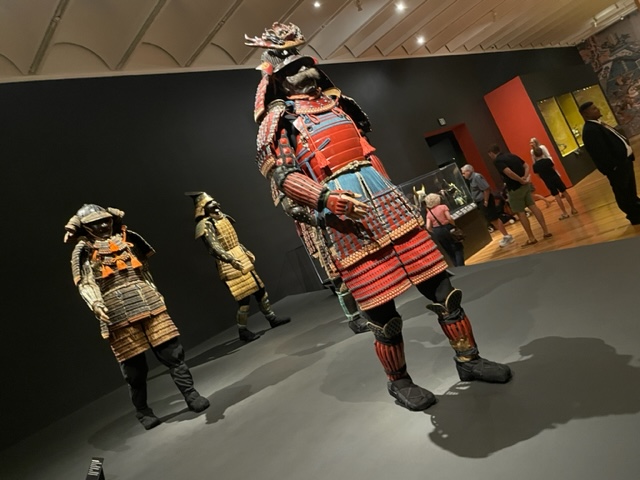
I’ve admired Sadler’s work for some time as he created one of my favorite local mural experiences that can be felt when driving on North Ave, under the bridge of the Beltline, through his The Gateway to Change: Abhaya’s Way, 2020. It was insightful for the High to incorporate his versatile, fresh voice into the exhibition.
